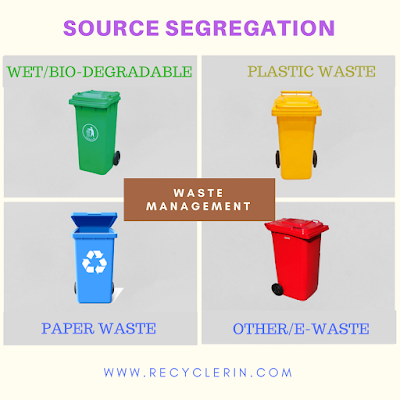Imagine a scenario where you have a lot of trash in your house. As most of the people do, you too would pack the waste in the black bag and toss it into the garbage truck. This is the most common scenario each of us sees in our daily life. Have you ever thought of what happened to the waste you just dumped into the garbage truck and get rid of it?
As most of the waste management companies do, the waste is first segregated with the help of machines. Metal scrap and other solid waste are separated using mechanical machines and rest of the waste are compressed and thrown into landfills. If the waste got lucky and have the considerable amount of calorific value, it may reach to the incineration centre where it is burned down to get energy. But, this burning also releases harmful gases, ash and other effluents.
Besides all these, the waste which had value no longer can serve its true purpose and lost its own properties. Food waste and gardening waste can be used to make compost but with plastic and metal waste, it would take decades to decompose. This makes waste management real hard.
What is the solution?
From last few years, people are becoming aware of waste and waste management. They are protesting against plastic waste, use of unwanted materials and pollution. One of the very effective methods that come into practice is "Source Segregation". Countries like South Korea, Germany, Italy, Singapore are already practising the waste sorting and have been able to reduce the waste by very great number. Recently, in 2016, the Indian government has passed the new Waste Management Rules 2016 which states that it is compulsory for everyone to segregate waste as dry and wet waste before tossing it into the garbage truck.
Waste sorting is the process by which waste is separated into different elements. Waste sorting can occur manually at the household and collected through curbside collection schemes, or automatically separated in materials recovery facilities or mechanical biological treatment systems. Hand sorting was the first method used in the history of waste sorting.
Waste segregation means dividing waste into dry and wet. Dry waste includes wood and related products, metals and glass. Wet waste, typically refers to organic waste usually generated by eating establishments and are heavy in weight due to dampness. Waste can also be segregated on basis of biodegradable or non-biodegradable waste.
Source segregation can help prevent up to 80% of the waste from being dumped into landfills. Most of India's landfills are overflowing already and it is estimated that by 2030, India would be in need of the landfill of the size of Banglore city. This shows that how badly we need the source segregation.
By segregating waste, we can not only save the landfills from being full but can also utilize the other waste properly and can get monetary value for it. This will ensure that waste is recycled and treated properly and only the inert material is thrown into the landfills.
Waste segregation is not only necessary for ourselves, it is a must for environmental concerns as well. Also, it would make the waste management very effective. It is not just the rule to follow but it is our moral responsibility to maintain and improve the quality of the environment and to preserve it for the future generation.






No comments:
Post a Comment